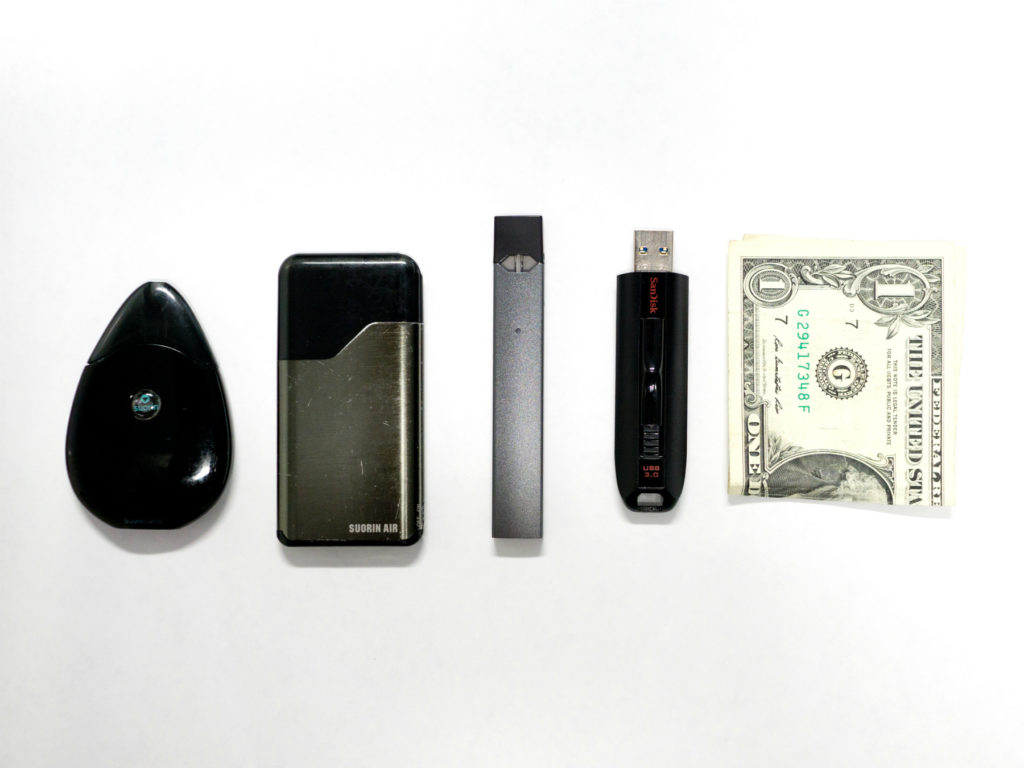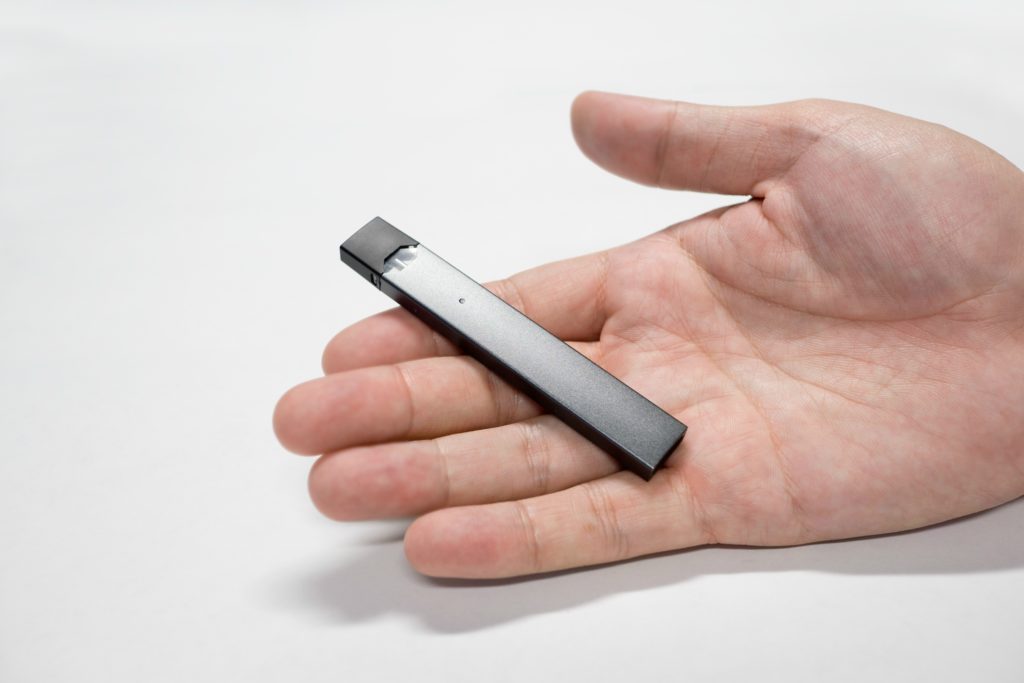In presentations to educators and parents, OCDE Prevention Coordinator Stephan Lambert displays some of the electronic cigarettes and vaping devices that have been confiscated at schools.
His point is quickly and visually evident. These don’t look like smoking devices.

Some closely resemble flash drives, highlighters or correction tape. Others could be easily mistaken for makeup cases, credit card holders or batteries.
“They’re very compact and slim,” Lambert says. “Because they don’t look like what, traditionally, most people consider vapes to look like, you can pocket them, you can put them in places where they won’t be seen.”
“You could almost palm them in your hand,” adds OCDE’s Ryan Crowdis, who oversees the local Tobacco-Use Prevention Education (TUPE) consortium, “and no one would even know.”
It turns out there’s a lot that’s not widely known about vaping, which has seen a recent spike in use among young people. To better understand the phenomenon and the products themselves, we sat down with Lambert and Crowdis to get answers to a few basic questions.
What is vaping?
The term vaping applies to any sort of electronic smoking device and nicotine delivery system. You might alternatively hear them referred to as e-cigarettes or e-cigs, and they come in all shapes and sizes. But they essentially function the same way. Within each device, a battery heats up a metallic coil, which turns a liquid into an aerosol that can be inhaled. The liquids typically contain nicotine and flavorings.
What do the devices look like?

When people think of e-cigarettes or vapes, they tend to imagine cylindrical objects similar in size and shape to cigarettes. Or maybe they’ve seen those boxy “tank” devices that can be unscrewed by users to add their own liquids. But, as the photos show, companies like Juul and Suorin have developed more discreet vape pods that resemble objects commonly found in the home, school or office. They don’t smell like tobacco when used, and the smoke can be pretty minimal.
“They’re very small and look like household objects,” says Lambert. “The Juul, for instance, looks like a flash drive. We’ve had instructors tell us, ‘I picked one up and handed it back to the student because I thought they dropped their flash drive.’”
How prevalent is vaping among young people?
According to data from the California Healthy Kids Survey, the vast majority of Orange County students are not vaping. That’s the good news. But national rates are increasing — and fast.
A study released in December by the National Institute on Drug Abuse revealed that nearly 1 in 3 high school seniors reported using some kind of vaping device in the year prior. According to the Centers for Disease Control and Prevention, e-cigarette use among middle and high school students tripled from 2013 to 2014 alone. Says Lambert, “E-cigarette use has roughly doubled that of traditional cigarette use in all age categories.”
What’s the biggest challenge for schools?
That vape pens and other devices can be so easily concealed is a serious problem for schools. But Lambert and Crowdis say the biggest challenge is the culture of vaping and the perception that it’s a safe and trendy alternative to smoking cigarettes. “People think of these things as safe, as a step down from tobacco smoking,” Lambert says. “They’re not seeing the potential for harm.”
What are the dangers associated with vaping?
While the heating of propylene glycol and flavorings can generate formaldehyde and other carcinogens, researchers are still studying the long-term health effects. But e-cigarettes and other vape devices typically contain nicotine, which is highly addictive. According to a 2016 report from the U.S. Surgeon General, which notes the potential for harmful constituents, “nicotine exposure can also harm brain development in ways that may affect the health and mental health of our kids.”
“There’s a difference, too, in the type of nicotine that they’re using,” says Crowdis. “They’re using a nicotine that is a lot more potent. It has more of the actual nicotine in the liquid.” He adds that some vaping devices are also being used to deliver different forms of marijuana.
What are OCDE and local school districts doing to address the issue?
The Tobacco-Use Prevention Education program, or TUPE, uses tobacco tax revenue from the state to fund prevention efforts at participating districts. Crowdis says TUPE takes a four-pronged approach that embeds prevention curricula into health, science and P.E. courses while also promoting student-led anti-tobacco initiatives, school-based intervention strategies and tobacco cessation services, which are offered in partnership with the Orange County Health Care Agency.
Additionally, OCDE staff — armed with data from the California Healthy Kids Survey — lead trainings and help local districts develop policies to address tobacco use. Lambert facilitates workshops for schools and parents, providing strategies for communicating with children based on the most current research.
How can educators and parents learn more?
For additional resources, including information about vaping, e-cigarettes and smoking cessation options, visit OCDE’s Alcohol, Tobacco and Other Drug Prevention webpage. OCDE, in partnership with the Orange County Health Care Agency and the Orange County Sheriff’s Department, has also developed a state-funded youth awareness and prevention campaign at Notsosafe.org.
A version of this post was originally published on Sept. 5, 2018.
